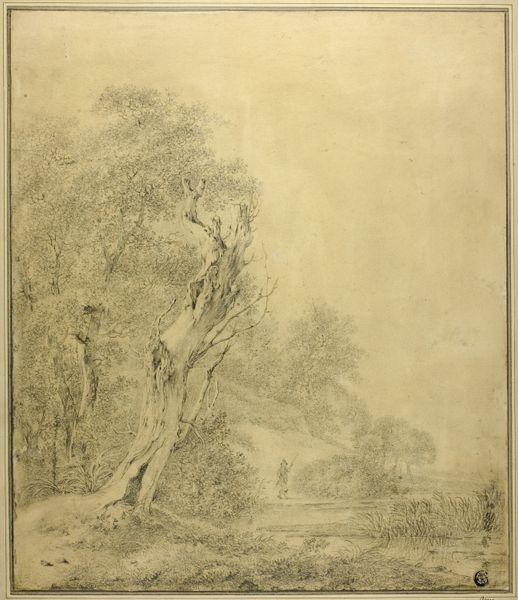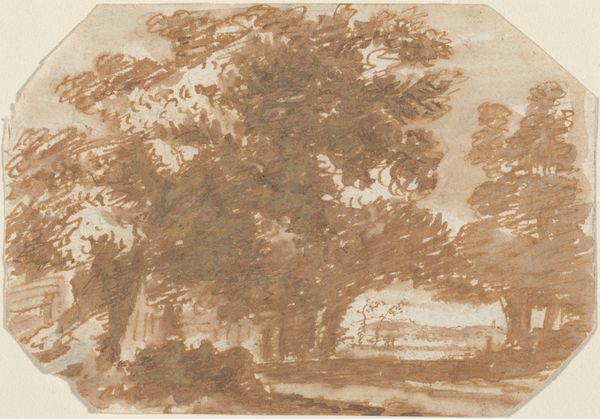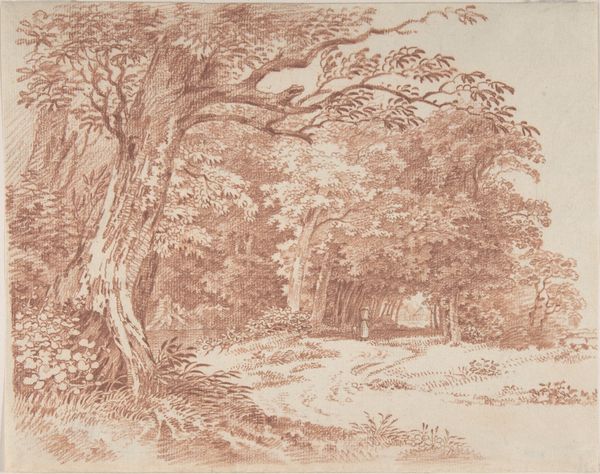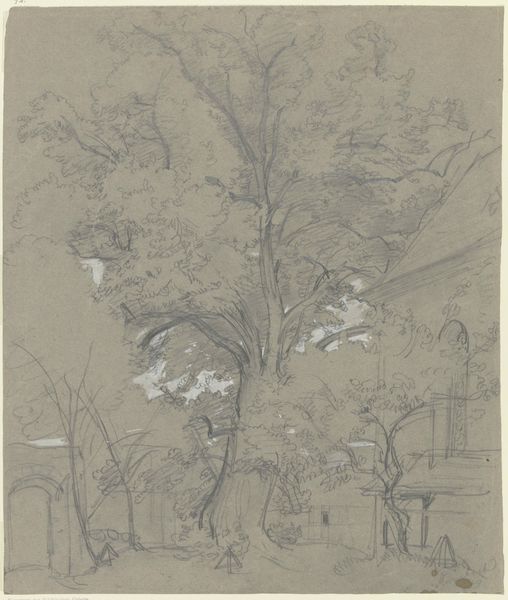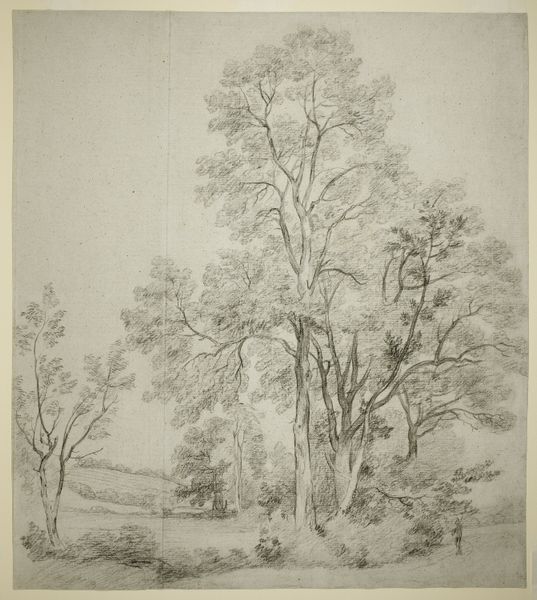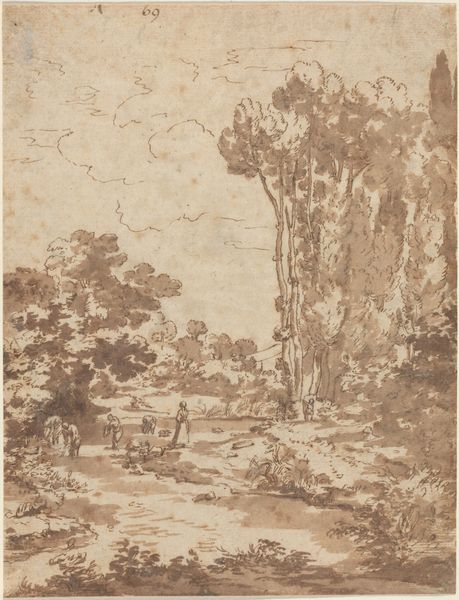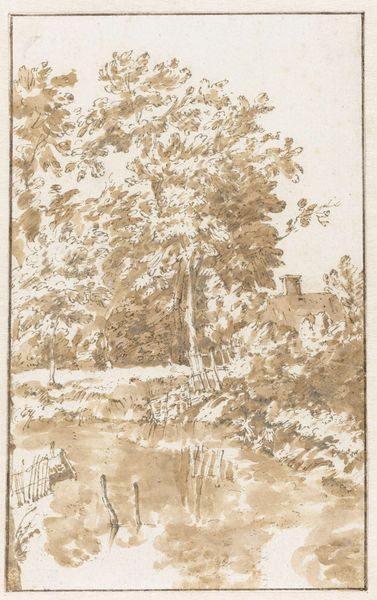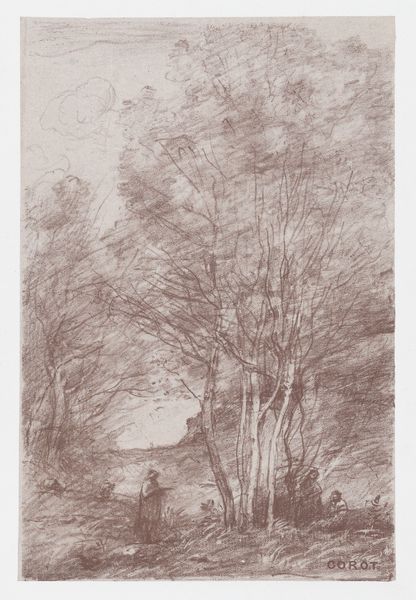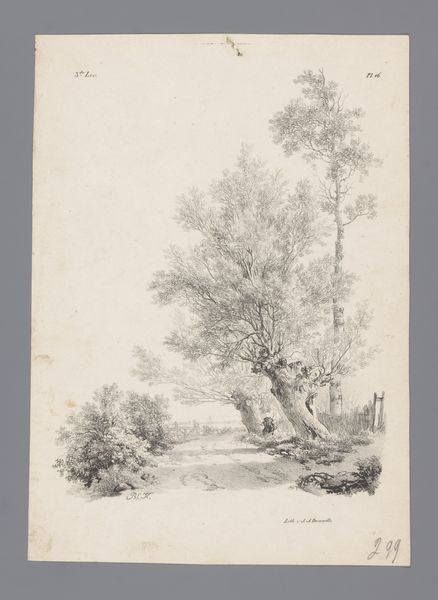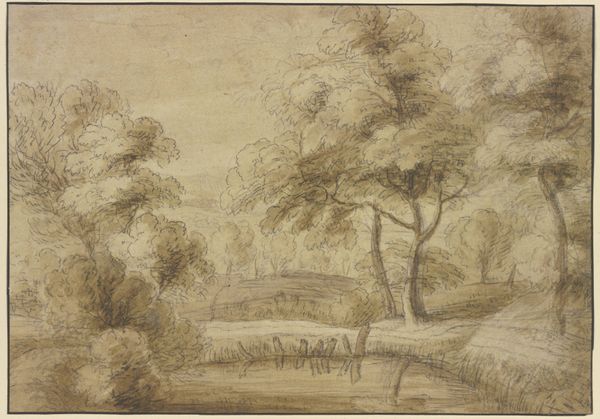
drawing, print, gouache, paper, ink, pencil, chalk, graphite
#
drawing
#
neoclacissism
#
water colours
# print
#
gouache
#
landscape
#
classical-realism
#
paper
#
ink
#
carved into stone
#
underpainting
#
pencil
#
chalk
#
graphite
Dimensions: 202 × 156 mm
Copyright: Public Domain
Curator: The Art Institute of Chicago holds this drawing by Gaspard Dughet, "View of Ruined Arches and Tomb in Villa Borghese." It's an interesting piece. Editor: Yes, the sepia tones give it an immediate air of aged elegance, almost melancholic. It feels like looking at a faded memory, or an architectural rendering awaiting approval. Curator: Indeed. Dughet was known for his landscape paintings, but this drawing showcases his skill with layered washes of ink and gouache. It makes me think of the sheer volume of material—paper, ink, the labor itself—involved in capturing these views, translating the experience of a specific location into a commodity for a patron's enjoyment or study. Editor: And consider that location: Villa Borghese, a space of elite leisure, appropriated by artists and then circulated as imagery. This artwork really underscores how landscapes were transformed into objects of cultural capital, displayed within collections, shaping perceptions of both nature and social status. Think about who this was made for, and how it informed their experience. Curator: Precisely! I'm intrigued by how Dughet utilized preliminary sketching in pencil or graphite underpainting here, before layering on the wash, creating this very detailed scene. And how those technical aspects then inform our understanding of artistic labor at the time. Editor: And the ruins themselves – not just picturesque, but signifiers of history and empire, actively constructed and presented for viewers in the present. They invite the viewer to engage in a discourse with history and also participate in this culture. Curator: Very well put. And if you look closely you will see other materials too—there's evidence of chalk here, likely utilized to lend a subtle luminosity and build the form. You can see the artist experimenting and layering on materials, almost as if engaging in a dialogue of their own. Editor: So it is an interpretation of history then, manufactured for display in places like this very gallery. An artifice built upon other artifice. Food for thought. Curator: Absolutely. It brings an intriguing materiality to landscape, reminding us it’s not just a vista but also a product. Editor: Ultimately, a reminder of how even seemingly tranquil landscapes are interwoven with complex cultural forces. Thanks!
Comments
No comments
Be the first to comment and join the conversation on the ultimate creative platform.

